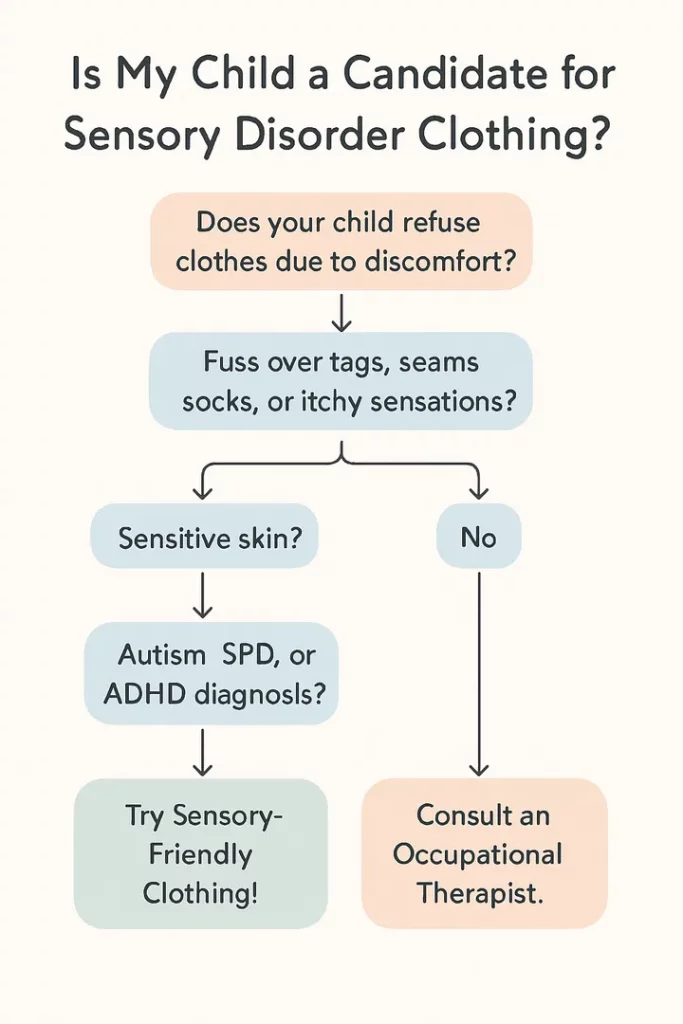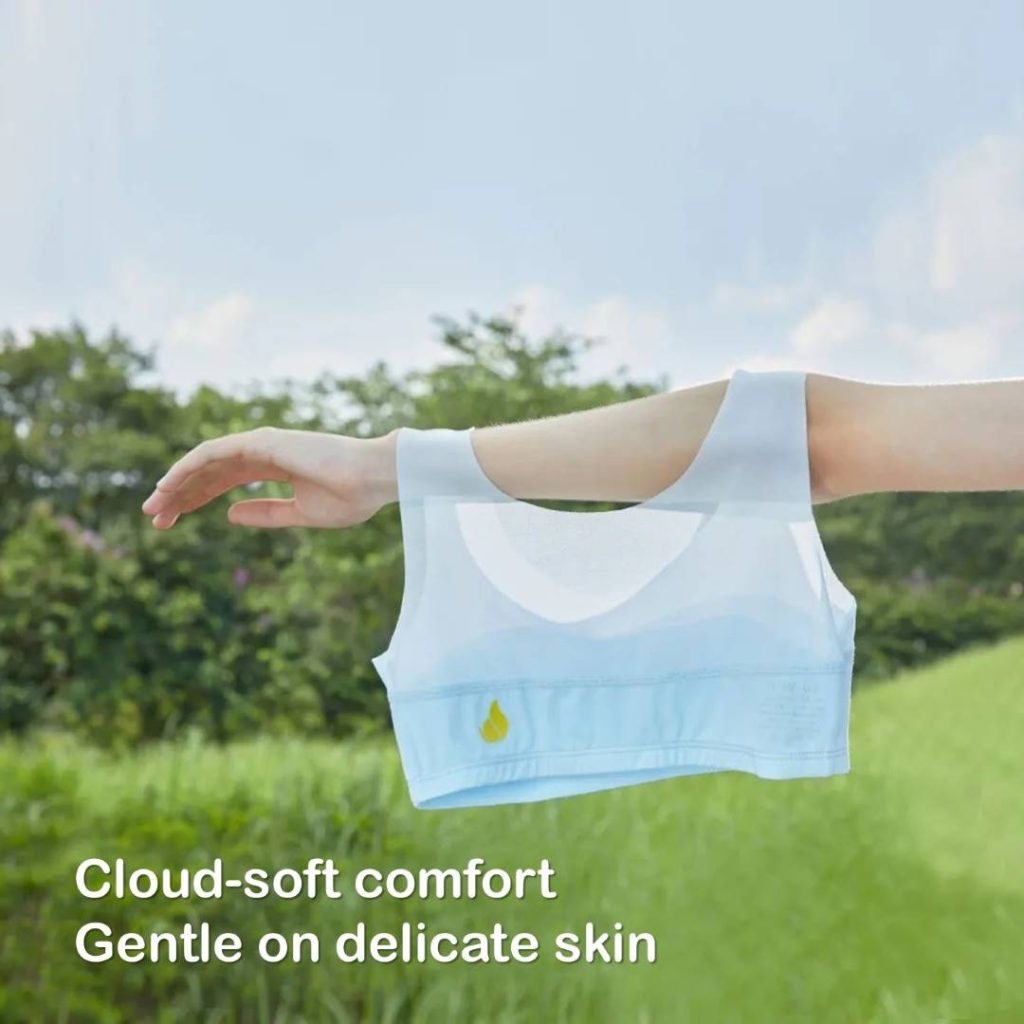If you’ve ever watched your child have a meltdown over a seam, tag, or that “itchy shirt,” you know firsthand how clothing can spark real struggles for children with sensory needs. Many moms ask: “Why does my child refuse to wear certain socks or shirts? Is it just a phase, or something deeper?” The answer is often tied to sensory issues—especially common for kids with autism spectrum disorders, SPD (Sensory Processing Disorder), or ADHD. Sensory-friendly clothing is designed with these unique sensory experiences in mind.
Why Sensory Clothing Matters for Kids with Autism and SPD
Huge numbers of children with autism or sensory processing disorder deal with daily discomfort. Research reveals over 90% of kids on the autism spectrum struggle to process sensory input from clothes—think scratchy seams, stiff tags, or stiff collars. When it comes to sensory-friendly clothing, comfort isn’t a luxury; it’s essential for reducing stress and making life easier for children with sensory sensitivities.
Let’s look at how adaptive clothing built for sensitive skin really helps:
Before we get to the details, imagine how challenging getting dressed can be when every sock seam, shirt collar, or itchy tag feels unbearable. For sensitive children, these tiny details become daily obstacles. That’s where a new approach to clothing comes in—all about removing sensory triggers.
- No itchy seams or scratchy tags: The best sensory clothing uses tagless labels and flat seams to keep tactile irritation away from sensitive skin.
- Ultra soft, breathable fabric: Sensory-friendly clothing made with organic cotton, bamboo, and special blends delivers a super soft touch that soothes kids with sensory processing disorder.
- Easy closures and adaptive features: Magnetic snaps, elastic waistbands, drawstrings, and velcro closures make getting dressed way less stressful for boys and girls with fine motor challenges.
- Smart compression and deep pressure: Some adaptive garments provide gentle pressure, like a soft hug—helping regulate the nervous system and calm sensory overload.
- Flexible, seamless styles: Boxer shorts, adaptive underwear, and seamless socks offer relief for unique sensory sensitivities.
Clothing isn’t just clothing for kids with sensory challenges—it’s a daily tool for self-regulation.

How Sensory-Friendly Clothing for Autism and SPD Keeps Life Real
When dressing turns from a battle to a breeze, families win back precious time (and patience). Adaptive clothing for kids—with its soft fabrics, flat seams, and no tags—means children can finally focus on learning, playing, and enjoying daily life, rather than fighting through unbearable clothing sensitivities.
Today’s top sensory-friendly clothing isn’t only about being soft; it’s about empowering independence. With seamless closure designs and clothing without unnecessary buttons or zippers, occupational therapists (OTs) report kids with sensory processing disorders are more likely to dress themselves, with fewer meltdowns or moments of sensory overload. This level of comfort and independence builds confidence in both girls and boys.
| Feature | Why It Matters for Sensory Needs | Example in Sensory Clothing |
|---|---|---|
| Tagless | Avoids irritation and itching | Suyiyi Sensory-Friendly Bras |
| Flat Seams | Reduces tactile triggers on sensitive skin | Seamless underwear, socks |
| Ultra-soft, breathable | Prevents overheating and itchiness | Bamboo, organic cotton shirts |
| Easy closures | Helps independent dressing | Velcro, magnetic snaps |
| Compression/deep pressure | Calms sensory overload, supports regulation | Weighted vests, snug tops |
| Adaptive fit | Adjusts for unique sensory experiences | Drawstrings, elastic bands |
Why Suyiyi’s Sensory-Friendly Bras Are Changing the Game
For girls entering puberty, the challenge doubles. Suyiyi offers a unique sensory experience for tweens with ultra soft, tagless, sensory friendly bras designed for sensitive skin, so they can get the support they need without the pain of itchy seams or scratchy tags. Real-life moms say the difference is huge: their daughters can finally wear underwear that feels good, and they don’t have to fight over what’s “unbearable” each morning.
See how Suyiyi is helping families—and giving back peace of mind—on their Sensory-Friendly Bra lineup. For families shopping for adaptive clothing for kids, this is a brand tailor-made for reducing sensory struggles, backed by expert input from occupational therapists and real feedback from other parents.

FAQ: Sensory Clothing, Sensory Friendly Clothing for Autism, SPD Clothing
What is Sensory Clothing, and Who Should Try It?
Sensory clothing (also known as sensory-friendly clothing, adaptive clothing, or autism clothing) is created for children and adults with sensory sensitivities, especially those with autism, SPD, or ADHD. If your child complains about “itchy seams,” won’t wear certain fabrics, or melts down over socks or underwear, sensory clothing could be a game-changer.
What Types of Clothing Help with Sensory Processing Disorder?
Clothing matters! Look for:
- Seamless underwear, socks, and shirts
- Super soft fabrics like bamboo and organic cotton
- Tagless labels to eliminate scratchy irritation
- Elastic waistbands and flexible closures
- Deep pressure vests for calming sensory input
What Common Clothing Issues Do Sensitive Kids Face?
Kids with sensory processing challenges may find clothing unbearable because of:
- Itchy seams or tags
- Stiff or scratchy fabrics
- Tight collars or elastic waistbands that don’t stretch
- Bulky drawstrings or velcro that rubs
- Clothing that’s hard to put on, especially for those with fine motor delays
Can Adaptive Clothing for Kids Prevent Meltdowns?
Many parents and occupational therapists say yes: soft, tagless, and seamless clothing, breathable fabrics, and clothes that are easy to put on reduce arguments and meltdowns over clothing. Some families find deep pressure vests or compression styles help kids manage their sensory overload and stay calmer throughout the day.
Are Sensory Clothing Any Drawbacks?
Every child’s unique sensory blend means what’s perfect for one may bug another. Occasionally, a fit feels off—too tight, too loose, wrong fabric. Testing new types of clothing, reading reviews, and working with occupational therapists can help tailor the right wardrobe for your child.
Try Suyiyi’s sensory-friendly bras for real comfort and real confidence for your daughter. These bras offer the best of sensory-friendly, adaptive clothing, free from scratchy seams, tags, or stiff closures—so girls and boys everywhere can finally feel comfortable in their own clothes.
